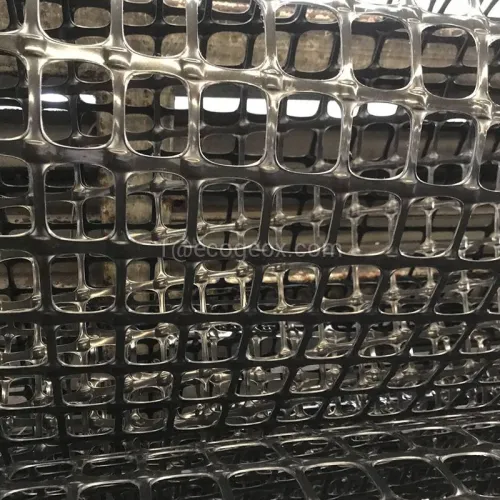Geogrids are essential geosynthetic materials used in civil engineering and construction projects to improve soil stability, reinforce retaining walls, and enhance pavement performance. Selecting the right geogrid for your project is crucial for ensuring long-term durability and cost-effectiveness. Here are several key factors to consider when choosing the appropriate geogrid for your specific application:
The first step in selecting the right geogrid is to clearly define the type of project and its intended application. Geogrids are used in a variety of projects, including road construction, embankment reinforcement, slope stabilization, and retaining wall construction. Different applications may require geogrids with specific characteristics and properties to meet project requirements.
Geogrids are typically made from one of two materials: polymer (plastic) or fiberglass. Polymer geogrids are more common and are known for their high tensile strength, flexibility, and resistance to chemical degradation. Fiberglass geogrids are less flexible but have excellent tensile strength and resistance to temperature variations. Your choice of material should align with the environmental conditions and demands of your project.

Tensile strength is a critical parameter for geogrids. It measures the geogrid's ability to withstand forces applied in tension. Geogrids are available in various tensile strengths, often categorized as low, medium, or high strength. The choice of tensile strength should be based on the expected loads and stresses the geogrid will experience in the project. Additionally, consider the geogrid's modulus, which indicates its stiffness and ability to distribute loads efficiently.
The aperture size and shape of the geogrid are crucial factors that influence soil interaction, compaction, and aggregate interlock. Geogrids with larger apertures are typically used for coarse-grained soils, while those with smaller apertures are better suited for fine-grained soils. The shape of the apertures, whether square, rectangular, or triangular, can also affect the geogrid's performance and interaction with soil particles.
Junction strength refers to the strength of the connection points within the geogrid structure. Higher junction strength enhances the geogrid's ability to distribute loads effectively. When selecting a geogrid, consider the design and manufacturing quality to ensure that junction strength is adequate for your project's requirements.
The durability of the geogrid is crucial for the longevity of your project. Consider factors such as resistance to UV radiation, chemical exposure, and environmental conditions prevalent in your project area. Geogrids with enhanced durability and resistance to degradation are essential, especially for long-term applications.
Different geogrids may have specific installation requirements, including overlap distances, anchor trench depths, and connection methods. Ensure that you choose a geogrid that aligns with your project's installation capabilities and budget. Some geogrids may require specialized equipment or techniques for proper installation.
Cost is always a significant factor in any construction project. While it's essential to choose a geogrid that meets your project requirements, consider the overall cost-effectiveness, including the initial purchase cost, installation costs, and long-term maintenance expenses. A higher-quality geogrid may offer better long-term value by reducing maintenance and repair costs.
Lastly, ensure that the selected geogrid complies with relevant industry standards and regulations. Different regions may have specific requirements for geosynthetic materials used in construction. Compliance ensures that your project meets safety and quality standards.
In conclusion, choosing the right geogrid for your project is a critical decision that can significantly impact its success and longevity. Consider the project type, material, tensile strength, aperture size and shape, junction strength, long-term durability, installation requirements, cost, and compliance with standards when selecting the appropriate geogrid. By carefully evaluating these factors, you can make an informed decision that ensures the stability, performance, and longevity of your construction or civil engineering project.
Copyright:@2020-2021
Comments Please sign in or sign up to post.
0
0 of 500 characters used